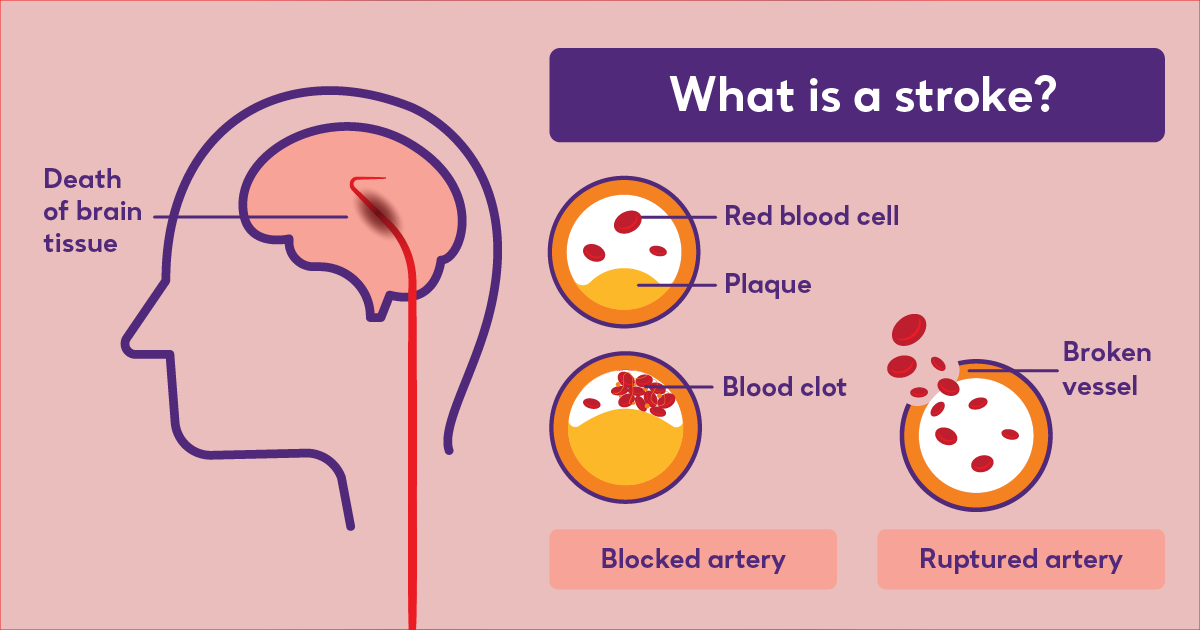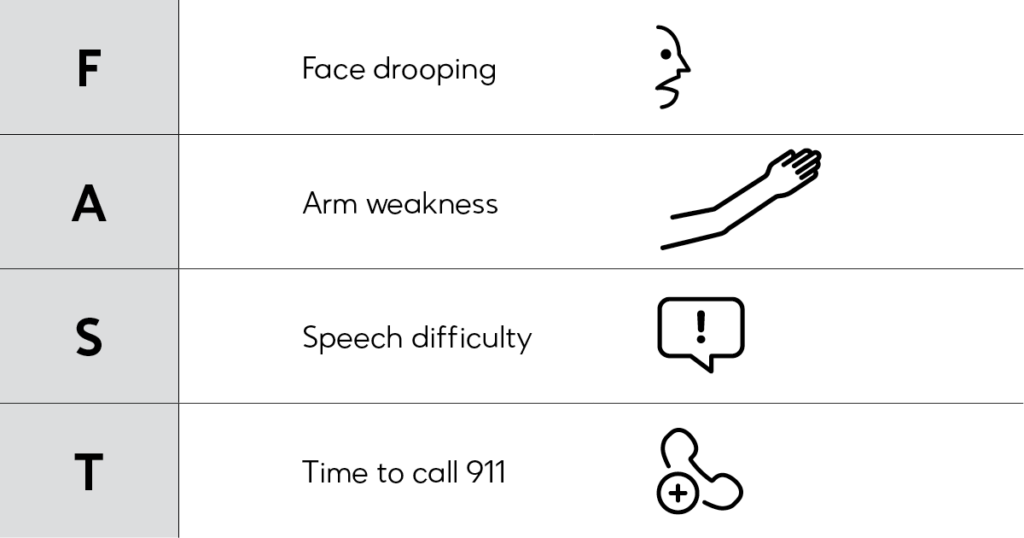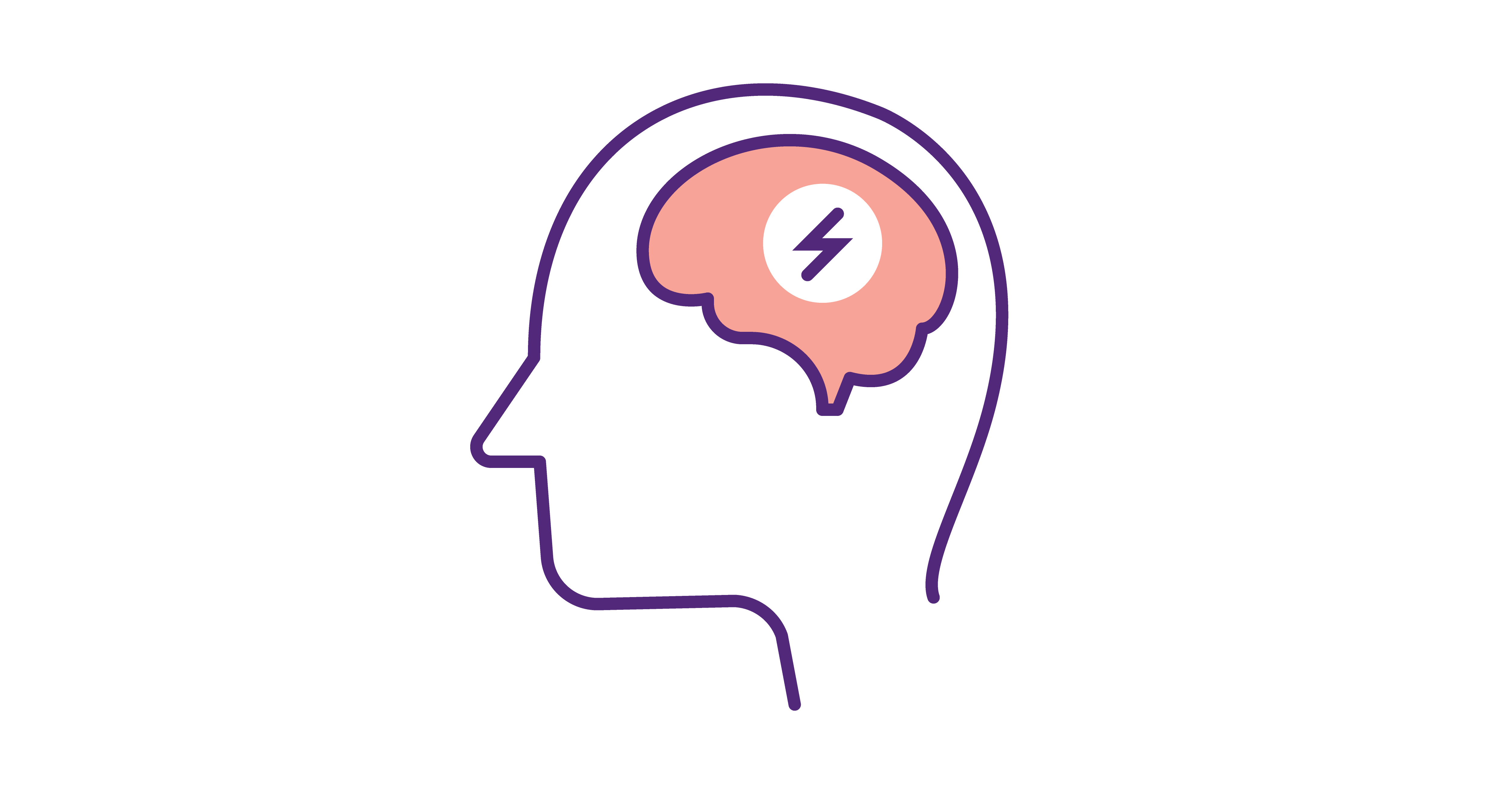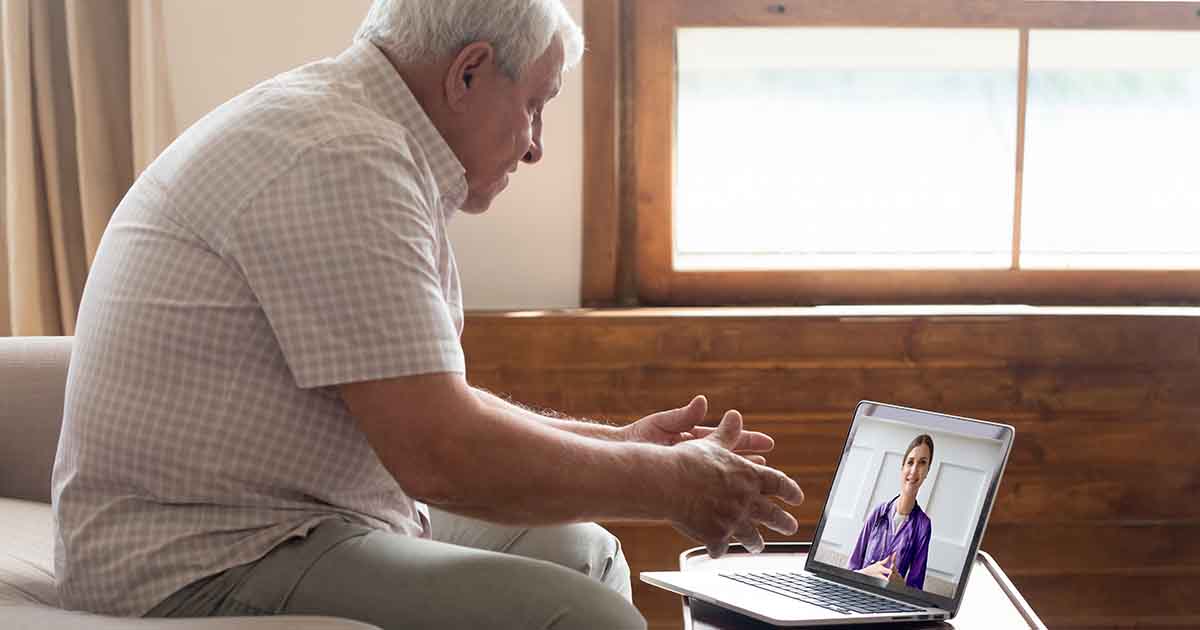If you ever suspect that you could be having a stroke, it is important to act F.A.S.T. Luckily, there are common signs of a stroke you can watch for.
And if you or your loved one ever experiences a sign or symptom, you can take action quickly and potentially save a life.

What is a stroke?
A stroke occurs when a blood vessel that carries nutrients and oxygen to the brain is no longer able to get those nutrients and oxygen to the brain. This can be caused by a thick clump of blood (a clot) or a burst in the vessel (a rupture).
When this happens, the affected part of the brain cannot get the blood and oxygen it needs. This causes the brain cells and tissue to begin to die. Since the brain controls our body processes, a stroke may affect your ability to move, feel, think or behave.
Types of strokes
Not everyone will experience the same effects after a stroke. It depends on the location and type of stroke that occurs.
Ischemic stroke
Ischemic strokes are the most common type of stroke and occur when a clot blocks a blood vessel that supplies blood to the brain. This causes the artery to become narrow or clogged, cutting off blood flow to brain cells.
Hemorrhagic stroke
Hemorrhagic strokes are the least common type of stroke and occur when a blood vessel bursts in the brain. The ruptured vessel keeps the surrounding areas of the brain from getting needed oxygen.
Transient ischemic attacks (TIAs)
These are often referred to as “mini” strokes. The signs are the same as a stroke, but typically last a shorter amount of time and sometimes resolve completely. While they don’t usually cause lasting damage, they are major predictors of future stroke and should be taken very seriously.
Signs of a stroke
When you know the warning signs of a stroke, it can help save your life or the life of someone you love.
It’s important to keep in mind that signs and symptoms of a stroke appear suddenly and not every person has all of them. If you suspect you’ve had or are having a stroke or TIA, don’t ignore it! Call 911 and get immediate medical attention.
Any of the following signs should be treated seriously and quickly:
- Sudden numbness or weakness of the face, arm or leg, especially on only one side of the body
- Sudden confusion, trouble speaking or understanding
- Sudden trouble seeing in one or both eyes
- Sudden trouble walking, dizziness or loss of balance
- Sudden severe headache with no known cause
Act F.A.S.T.
To help you recognize the signs of a stroke, learn the F.A.S.T. acronym so you are able to act F.A.S.T. if needed.

A: Arm weakness,
S: Speech difficulty,
T: Time to call 911
What to do when warnings signs of a stroke happen
A stroke is a medical emergency and every second counts. Getting quick treatment may improve the chances of survival and reduce long-term effects of a stroke.
If stroke warning signs occur:
- Do not ignore them, even if they go away! Some people may have only one or two signs while others may have more.
- Note the time when your symptoms started.
- Act FAST. Call 911 or your emergency response number right away.
Preventing a stroke
There are certain risk factors you can’t control such as age, gender or previous stroke history, however the majority of risk factors can be managed. According to the Centers for Disease Control and Prevention (CDC), 80% of all strokes can be prevented through behavior and lifestyle changes.
The most controllable risk factor for a stroke is high blood pressure. When your blood pressure is at a healthy level or is being medically treated, it reduces your risk for a stroke.
Other important things you can do to manage your risk factors include:
- Quitting smoking
- Managing conditions such as diabetes or heart disease
- Lowering your cholesterol
- Increasing your physical activity
- Maintaining a healthy weight
- Decreasing alcohol intake
- Treating sleep apnea
Generally, taking your blood pressure daily, taking all medications as prescribed, keeping all scheduled physician appointments and maintaining a healthy lifestyle through exercise and nutrition will help you have more control over your risk for a stroke.
While the advice listed above is generally associated with a lowered risk for stroke, it may not be advisable for everyone to follow. Please consult your physician before making any big changes to your diet, exercise or lifestyle routines.
How home health can help before or after a stroke
Before a stroke:
If your physician has certified you as homebound and recently diagnosed you with a new, chronic condition that could impact your stroke risk, you may be eligible for home health services.
Please note, to qualify for home health services through Medicare, you must meet all Medicare requirements.
If eligible, home health clinicians will educate you on your condition and provide practical management strategies to help you improve your quality of life and meet your specific health care goals.
After a stroke:
Having one stroke puts you at a higher risk of having another.
After a stroke, Enhabit’s Stroke Management Program can help you:
- Transition safely from the hospital or rehabilitation facility to your home
- Teach you how to self-manage the effects of a stroke
- Provide physician-ordered skilled therapy including physical, occupational, and speech therapies
- Educate you on risk factors and prevention strategies
- Work with your physician to manage your medications
- Set future health care goals
Enhabit will work with your physician to help you get the care that you deserve. Visit our services page to learn more about our home health services and how you can get started.
Social Share
At Enhabit our patients are our number one priority. From providing the latest medical practices to building deep personal connections, we’re focused on upholding every patient’s dignity, humanity and sense of control on their health care journey.
Home health
Our home health services give patients access to the care they deserve in the comfort of their own homes. From disease and injury management to recovery from surgery, our clinicians help patients confidently achieve their healthcare goals.
Hospice care
Our hospice care services place importance on the comfort of every patient living with a terminal illness. Our caring professionals are dedicated to providing not just physical care, but spiritual and emotional support to every patient and their loved ones.






